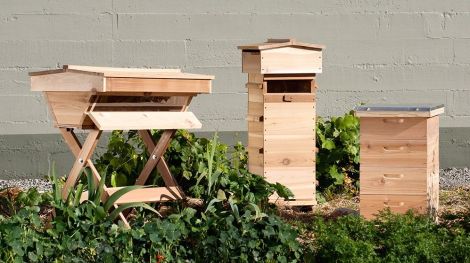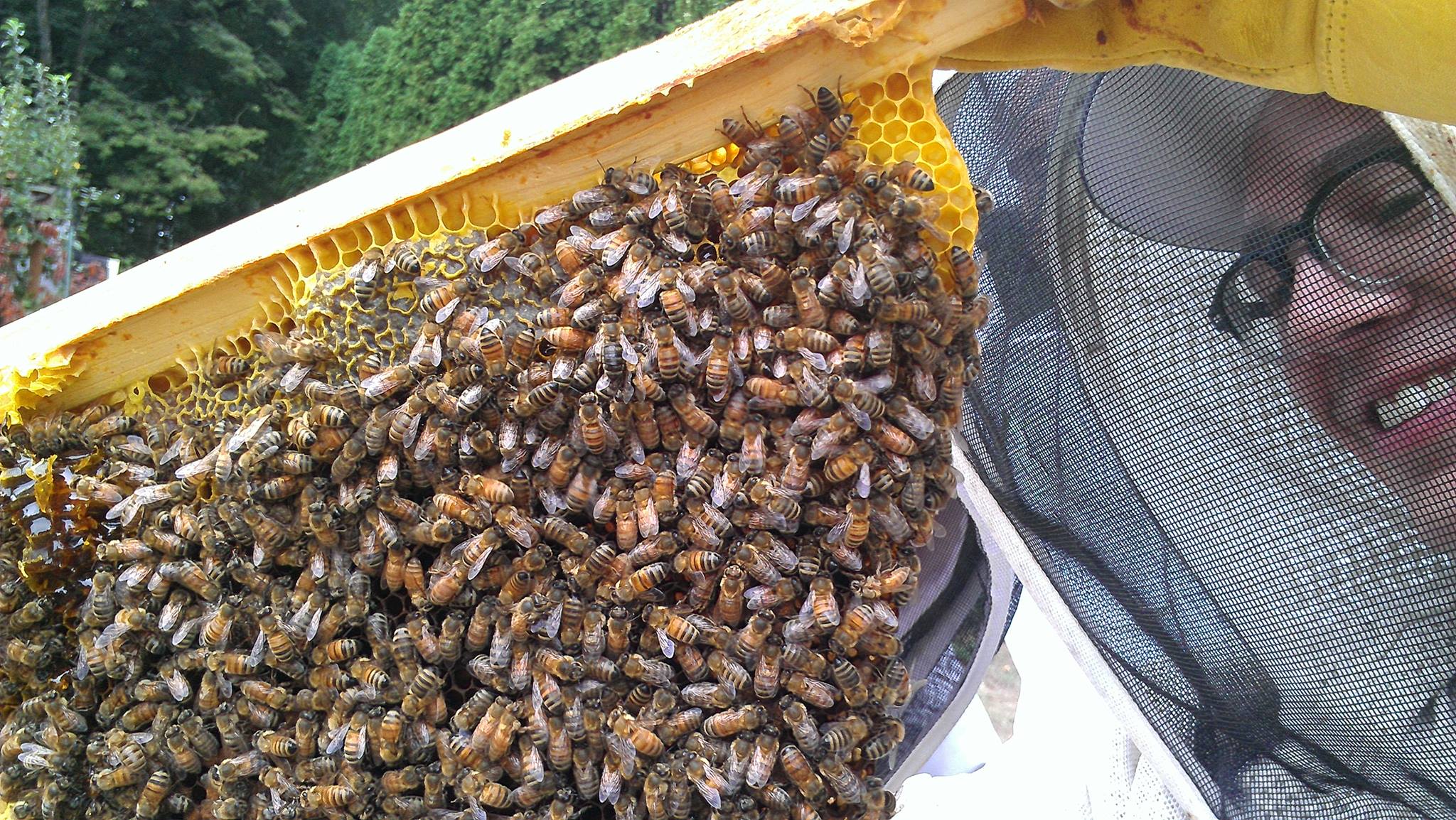Matt Reed is driving through Portland, Ore., with 20,000 bees in the back of his truck. This morning, someone tipped him off to a swarm of wild bees and he set off to catch them. He does this a lot this time of year, when wild swarms start to come out in the spring. Tomorrow morning he’ll move them to one of the hives he keeps in a local community garden.
Reed’s hives aren’t the usual stacks of white, blocky drawers, however. He builds “top bar” hives. Pared down, locally sourced-and-built, and often standing on stilts, they’re designed to mimic how bees build hives naturally. They’re in line with Portland’s trademark artisanal-everything lifestyle, but — or maybe because of that — beekeepers from New York to Nebraska want them.
Reed, a self-proclaimed bee dork, and his wife, Jill, got in to beekeeping and hive building randomly. In 2008, Jill spotted a sick bee on their kitchen windowsill. Matt, who says he’s the kind of person who always saves unloveable animals, set out a plate of honey to try to nurse the bee back to health. The bee ate the honey, got stronger, and flew off.
They didn’t think much of it, but the next day there was a swarm of bees outside their front door. “She had communicated that there was a food source and so they showed up,” Matt says.
Matt became fascinated by bees. Almost immediately he set up a hive in his parents nearby backyard. “I would just sit in a lawn chair and stare at the hive,” he says.
It got to a point where bee voyeurism wasn’t enough. He learned how to capture feral swarms (It’s surprisingly easy, he says: Shake ’em into a cardboard box and let them out near your hive.) and started dorking out about different kinds of hives.
In the U.S., the most commonly used hive is the boxy Langstroth design, which is low maintenance, and easy to scale up, so it makes sense for commercial beekeepers. Reed thought they were clunky, heavy, and not very practical for backyard beekeepers.
He decided to try building top bar hives, which he’d read about but which weren’t widely available. Top bar hives look like little coffins on stilts, and unlike Langstroth hives, which use premade wax combs, they are set up so the bees build their own combs. Reed says it makes for healthier colonies, and the USDA has done research showing that bee-built combs are more mite resistant.

Bee Thinking
Reed had never built anything before, but he started banging together hives in his garage. He got good at it, enough so that other people started asking for them. Demand got so, well, demanding that he couldn’t keep up. He outsourced the building to a local mill that specialized in local cedar, and in 2008 he and Jill opened Bee Thinking, a beekeeping store in Southeast Portland.
Reed says “natural beekeeping” — letting the bees build their own combs, and hiving feral swarms — has picked up recently. Colony collapse disorder, which first crossed the public consciousness in 2006, made people want to do something to support pollinators. And there’s a growing body of research about how feral bees are healthier than commercially bred honeybees.
And now, just like normcore and food trucks before it, Portland’s beekeeping philosophies are spreading. Since the Reeds have started building hives, beekeeping, and top bar beekeeping in particular has taken off.
Bee Thinking hives are showing up in surprising places: the Waldorf Astoria, in New York City, has some in its rooftop apiary. And other beehive builders, from major ones like Mann Lake, to boutiques like Williams-Sonoma, are now selling top bar hives as well.
Reed says these are all signs that people are embracing unconventional beekeeping. “There’s more written about honeybees than any other animal,” he says. “There’s a million different ways to do it.”
Today, the swarm he has in the truck will go into top bar hive at a community garden close to the store. “We let the bees build the hives how they want to, we just try to give them a good home to live in,” he says.


